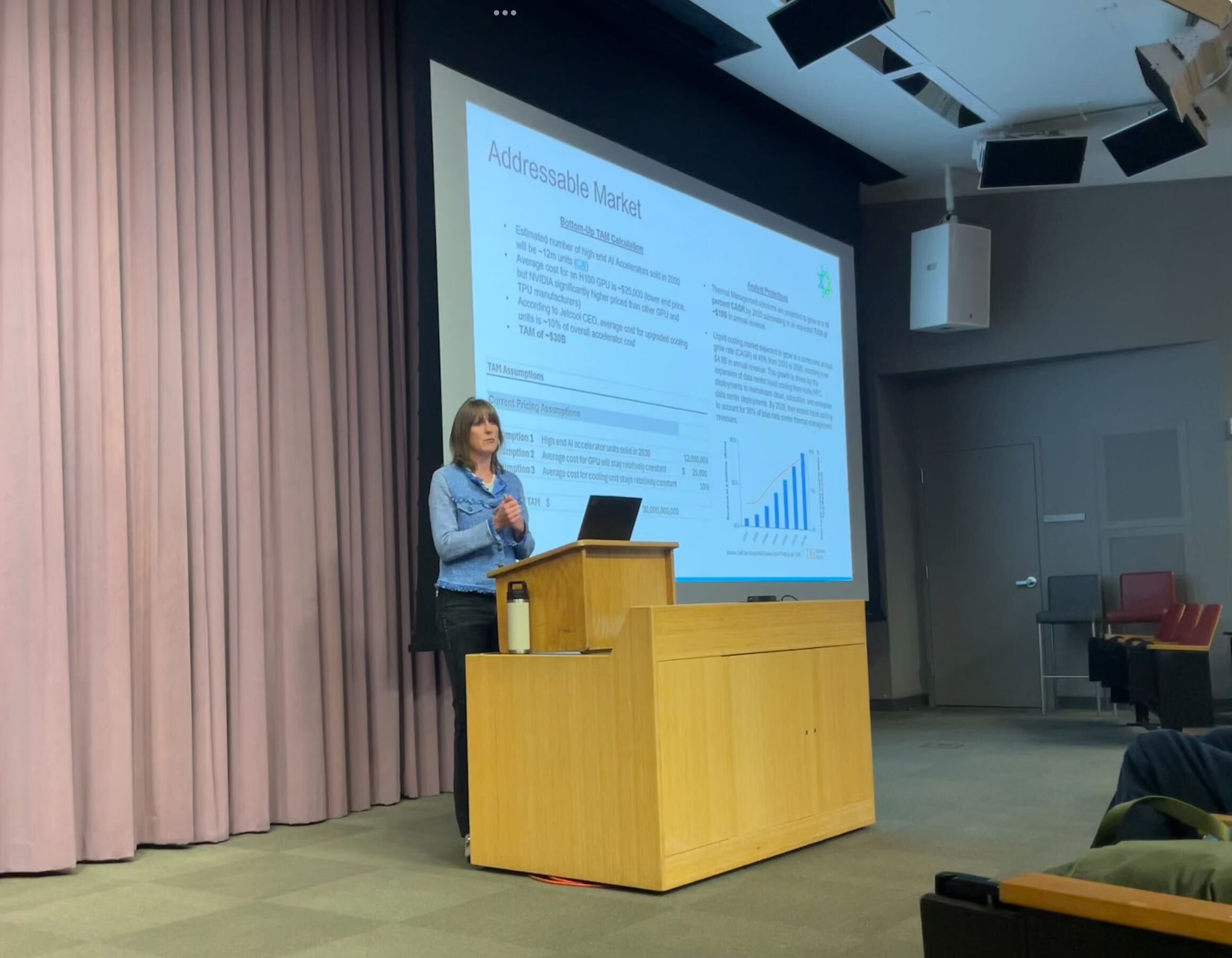SEC Pivots to Crypto-Friendly Rules, Aims to Fuel U.S. Innovation Lead – AInvest

Report on the U.S. Securities and Exchange Commission’s “Project Crypto” Initiative and its Alignment with Sustainable Development Goals
This report details the strategic shift in the United States’ regulatory approach to digital assets, as announced by the Securities and Exchange Commission (SEC) on July 31, 2025. The initiative, titled “Project Crypto,” aims to create a regulatory framework that not only fosters technological advancement but also aligns with key tenets of the United Nations’ Sustainable Development Goals (SDGs), particularly those concerning economic growth, innovation, institutional strength, and reduced inequalities.
Fostering Innovation and Resilient Infrastructure (SDG 9)
Project Crypto is fundamentally aligned with SDG 9, which calls for building resilient infrastructure, promoting inclusive and sustainable industrialization, and fostering innovation. By moving away from an enforcement-driven strategy, the SEC intends to establish a predictable and transparent environment conducive to innovation in the digital asset sector.
Key Strategic Pillars for Innovation
- Regulatory Clarity: The initiative commits to providing “bright-line rules” to classify digital assets, thereby reducing the uncertainty that has previously hindered development and investment. This supports the creation of a stable and innovative financial infrastructure.
- Support for On-Chain Systems: The SEC plans to develop workable rules for on-chain systems, including decentralized finance (DeFi), and explore amendments to existing regulations to accommodate the on-chain trading of tokenized securities.
- Tokenization of Traditional Assets: The agency will consider measures to facilitate the tokenization of equities and debt, a significant step in modernizing financial infrastructure and making markets more efficient and accessible.
- Integrated Service Platforms: By supporting “super-apps” that can operate under a single licensing structure, the project aims to reduce regulatory fragmentation and promote a more integrated and efficient market infrastructure.
Promoting Decent Work, Economic Growth, and Reduced Inequalities (SDG 8 & SDG 10)
The initiative’s focus on creating a competitive and clear market framework directly contributes to SDG 8 (Decent Work and Economic Growth) and SDG 10 (Reduced Inequalities). A well-regulated digital asset market is positioned to stimulate economic activity, create high-value jobs, and enhance financial inclusion.
Mechanisms for Sustainable Growth and Inclusion
- Economic Competitiveness: By establishing the U.S. as a leader in blockchain technology, Project Crypto aims to attract capital and talent, fostering sustainable economic growth and creating new opportunities for employment in the digital economy.
- Financial Inclusion through Self-Custody: The SEC’s emphasis on the right of individuals to self-custody their digital assets is a critical step toward financial empowerment. This can lower barriers to entry for unbanked and underbanked populations, directly addressing the goals of SDG 10.
- Competitive Custodial Services: Modernizing custody requirements for intermediaries is expected to foster a competitive market for custodial services, leading to more accessible and affordable options for all participants.
Building Effective, Accountable Institutions and Partnerships (SDG 16 & SDG 17)
Project Crypto embodies the principles of SDG 16 (Peace, Justice, and Strong Institutions) and SDG 17 (Partnerships for the Goals) by promoting a transparent, participatory, and collaborative regulatory process.
Strengthening Governance and Collaboration
- Transparent Rulemaking: The shift towards developing clear, publicly vetted rules, as opposed to regulation by enforcement, strengthens the accountability and transparency of the SEC as a public institution. The call for public comment ensures a participatory approach to governance.
- Inter-Agency Coordination: The SEC’s commitment to coordinating with the Commodity Futures Trading Commission (CFTC) and other regulators exemplifies the multi-stakeholder partnerships essential for achieving sustainable development. This collaborative approach ensures a cohesive and efficient regulatory environment for a complex and evolving industry.
Forward Outlook and Recommendations for Stakeholders
Project Crypto signals a transformative period for the digital asset industry, with significant implications for market participants. The initiative’s alignment with the SDGs suggests a long-term vision for a sustainable and inclusive digital financial ecosystem.
Strategic Recommendations
- Engage in the Public Process: Market participants are advised to actively monitor proposed rulemakings and contribute to the public comment process to help shape a balanced and effective regulatory landscape.
- Adapt Compliance Frameworks: Stakeholders should prepare for new regulatory requirements by assessing and enhancing their compliance, risk management, and operational capabilities.
- Seize Opportunities for Sustainable Innovation: The new framework is expected to create significant opportunities for capital formation and the development of innovative products that can advance both financial and sustainable development objectives.
Analysis of the Article in Relation to Sustainable Development Goals (SDGs)
1. Which SDGs are addressed or connected to the issues highlighted in the article?
The article on the SEC’s “Project Crypto” initiative connects to several Sustainable Development Goals by focusing on economic growth, innovation, infrastructure development, and the strengthening of regulatory institutions. The primary SDGs addressed are:
- SDG 8: Decent Work and Economic Growth – The initiative aims to foster economic activity by creating new opportunities for capital formation, product development, and market entry in the digital asset sector.
- SDG 9: Industry, Innovation, and Infrastructure – The core of “Project Crypto” is to build a modern regulatory infrastructure that supports technological innovation in the financial industry, specifically in blockchain and decentralized finance (DeFi).
- SDG 16: Peace, Justice, and Strong Institutions – The article highlights the SEC’s effort to become a more effective, transparent, and predictable institution by establishing clear rules and moving away from an enforcement-driven strategy.
- SDG 17: Partnerships for the Goals – The initiative involves collaboration between different regulatory bodies to ensure a cohesive and efficient regulatory environment for digital assets.
2. What specific targets under those SDGs can be identified based on the article’s content?
SDG 8: Decent Work and Economic Growth
- Target 8.2: “Achieve higher levels of economic productivity through diversification, technological upgrading and innovation…” The article directly supports this target by describing “Project Crypto” as an initiative to “foster innovation” and “spur new opportunities for capital formation, product development, and market entry.” The focus on supporting DeFi and on-chain trading represents a significant technological upgrade for financial markets.
- Target 8.3: “Promote development-oriented policies that support productive activities, …entrepreneurship, creativity and innovation…” The SEC’s plan to provide “purpose-fit disclosures, exemptions, and safe harbors” is a development-oriented policy designed to reduce regulatory uncertainty and encourage entrepreneurship in the crypto sector, which the article notes has historically driven businesses to other jurisdictions.
SDG 9: Industry, Innovation, and Infrastructure
- Target 9.1: “Develop quality, reliable, sustainable and resilient infrastructure… to support economic development and human well-being…” The article details the SEC’s plan to modernize the U.S. financial framework by creating a “robust and diversified custodial infrastructure for crypto assets” and rules to accommodate on-chain trading, which constitutes building a new, resilient digital financial infrastructure.
- Target 9.5: “Enhance scientific research, upgrade the technological capabilities of industrial sectors… encouraging innovation…” The entire initiative is centered on upgrading the technological capabilities of the financial sector. The article states the project’s goal is to “make America first in blockchain and crypto technology” by embracing on-chain markets and supporting DeFi, directly encouraging innovation.
SDG 16: Peace, Justice, and Strong Institutions
- Target 16.6: “Develop effective, accountable and transparent institutions at all levels.” The article emphasizes the SEC’s commitment to moving toward a “more transparent and predictable environment.” The development of “clear guidelines” and “bright-line rules” to distinguish between different types of digital assets is a direct effort to make the regulatory institution more effective and transparent for all market participants.
SDG 17: Partnerships for the Goals
- Target 17.14: “Enhance policy coherence for sustainable development.” The article states that the “SEC will coordinate with the Commodity Futures Trading Commission (CFTC) and other regulators to ensure a cohesive and efficient regulatory environment.” This collaboration is a clear example of enhancing policy coherence among different government institutions to achieve a common goal.
3. Are there any indicators mentioned or implied in the article that can be used to measure progress towards the identified targets?
While the article does not mention official SDG indicators, it implies several metrics that could be used to measure the success of “Project Crypto” and progress toward the identified targets.
Indicators for SDG 8 & 9 (Economic Growth, Innovation, and Infrastructure)
- Establishment of new regulatory frameworks: Progress can be measured by the successful publication and implementation of the “bright-line rules,” “safe harbors,” and “exemptions” for security tokens mentioned in the article.
- Growth in capital formation: An increase in the number and value of compliant Initial Coin Offerings (ICOs), airdrops, and other token-based fundraising activities within the U.S. would indicate success.
- Market development and competition: The number of new “super-apps” licensed and the growth of a “competitive market for custodial service providers” are measurable outcomes implied in the article.
- Adoption of tokenization: The volume of traditional assets, such as equities and debt, that are tokenized and traded on-chain would serve as a key indicator of innovation and infrastructure development.
Indicators for SDG 16 (Strong Institutions)
- Clarity in regulatory status: A reduction in litigation or enforcement actions related to the classification of crypto assets could indicate that the new, clearer guidelines are effective.
- Stakeholder engagement: The level of participation from market participants in the “public comment process” for proposed rulemakings can measure the transparency and accountability of the institution.
Indicators for SDG 17 (Partnerships)
- Inter-agency coordination: The establishment of joint task forces, memoranda of understanding, or unified rulemakings between the SEC and CFTC would be a direct indicator of enhanced policy coherence.
- Reduction in regulatory fragmentation: A decrease in conflicting or overlapping regulations for platforms offering both securities and non-securities products, as mentioned in the context of “super-apps,” would show progress.
4. Table of SDGs, Targets, and Indicators
| SDGs | Targets | Indicators (Implied from the Article) |
|---|---|---|
| SDG 8: Decent Work and Economic Growth |
8.2: Achieve higher economic productivity through technological upgrading and innovation.
8.3: Promote development-oriented policies that support entrepreneurship and innovation. |
|
| SDG 9: Industry, Innovation, and Infrastructure |
9.1: Develop quality, reliable, and resilient infrastructure.
9.5: Upgrade technological capabilities and encourage innovation. |
|
| SDG 16: Peace, Justice, and Strong Institutions | 16.6: Develop effective, accountable and transparent institutions. |
|
| SDG 17: Partnerships for the Goals | 17.14: Enhance policy coherence for sustainable development. |
|
Source: ainvest.com

What is Your Reaction?
 Like
0
Like
0
 Dislike
0
Dislike
0
 Love
0
Love
0
 Funny
0
Funny
0
 Angry
0
Angry
0
 Sad
0
Sad
0
 Wow
0
Wow
0

















































:focal(1500,1000)/https://media.globalcitizen.org/a6/9a/a69a4720-d8a1-4715-b596-18738d03c05c/rotary_polio_hero_image.jpg?#)






/countries/sri-lanka/photo-credit---dmc-sri-lanka.tmb-1200v.jpg?sfvrsn=dc298bcc_1#)

















